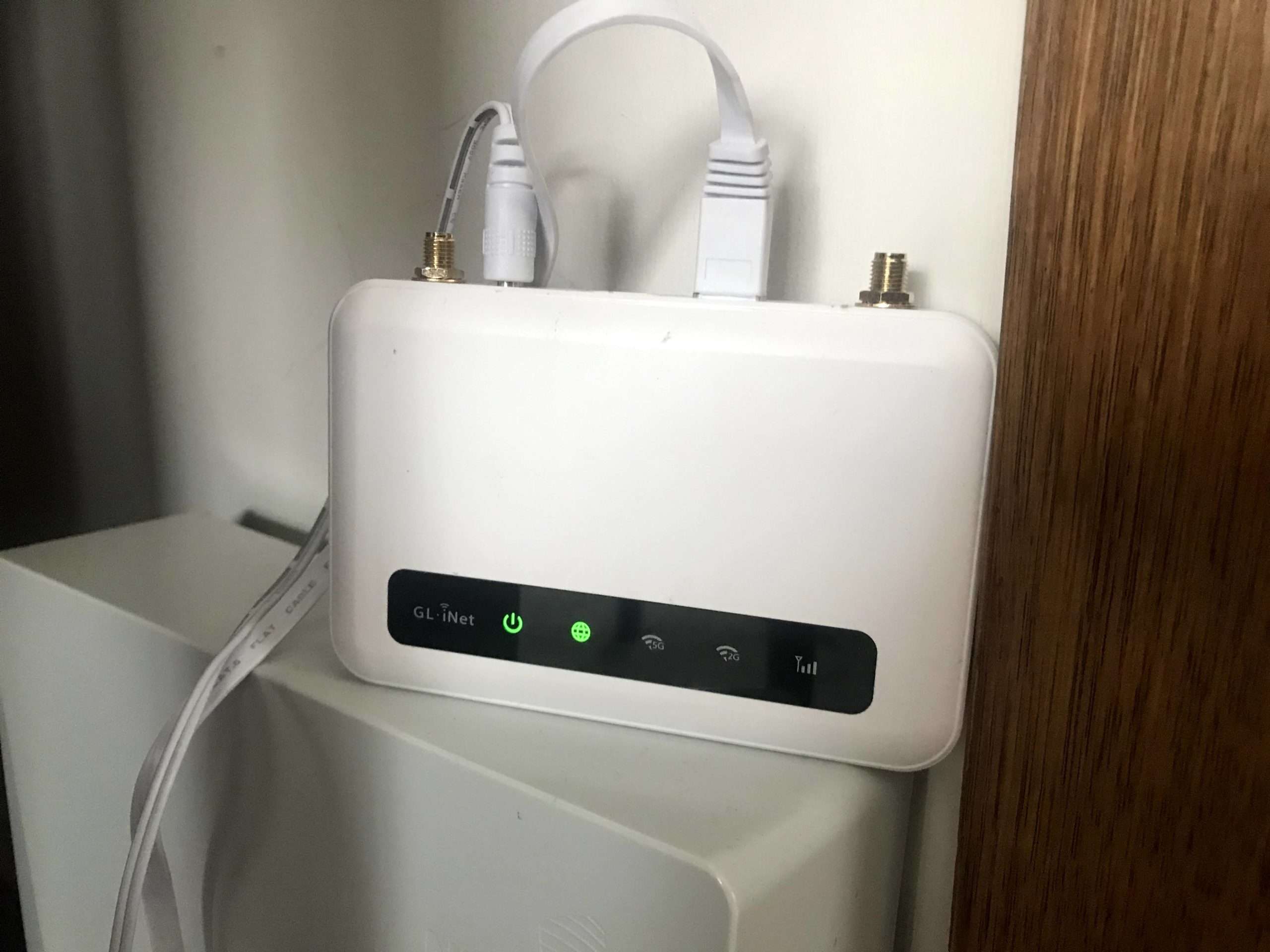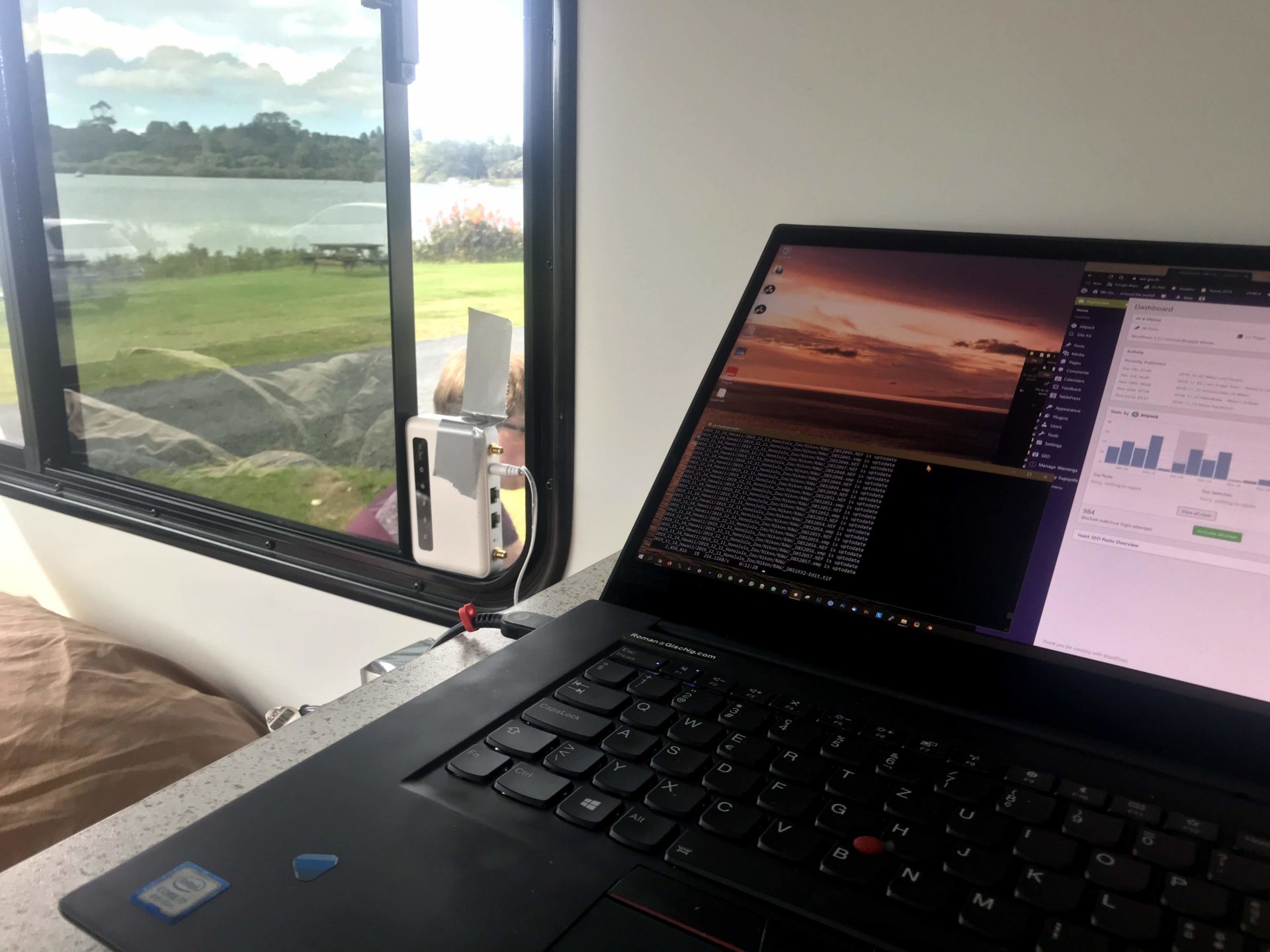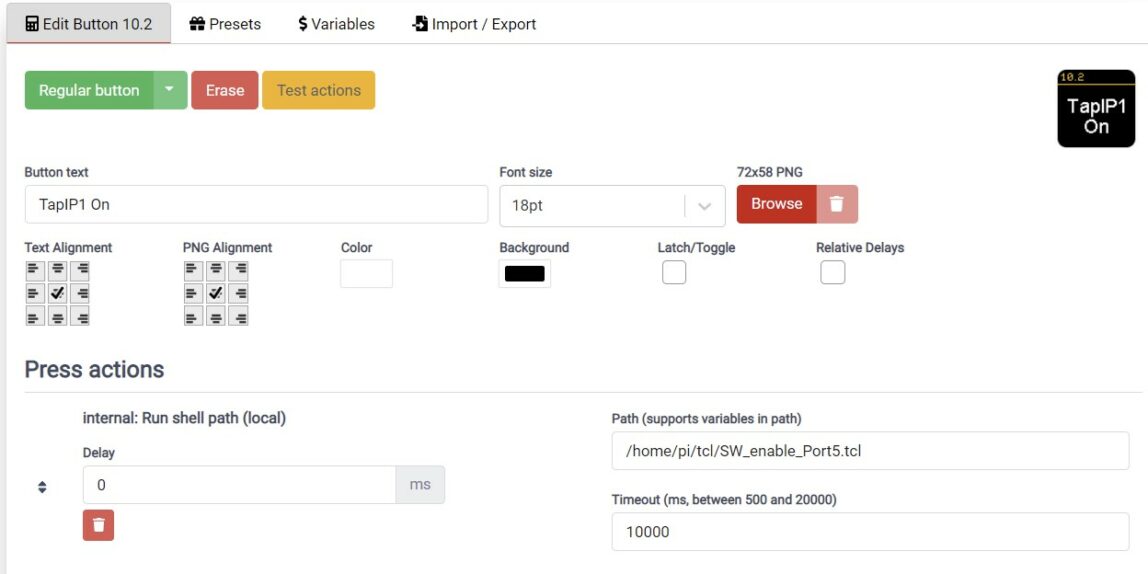As you know we are traveling for a year around the world. Mid way, I decided to get a mobile router, as most Wifi’s on campgrounds are very bad. Either they only support only 2.4GHz band, hence if there are too many people, the network collapses, or the 5GHz signal is too weak inside the RV. I assume that the RV’s have an aluminum sandwich construction, so blocking a lot of the Wifi signals.
My requirements
- Small & light
- USB powered
- SIM cards for USA / New Zealand / Australia / EMER
- Ethernet
- Wifi – repeater
- Open source capable (OpenWRT)
I circled in to the GL-X750 (Spitz) from GL.iNet. I had it delivered to a freind in San Jose California, as I did not know how long it will take to be delivered.
In the package I got the following:
- the router ( GL-X750 )
- An external power adapter (12V) with US/EMEA power connector
- Two antennas for the GSM signal
- One Ethernet cable
Setup
The setup was easy, power up the unit, connect to the supplied Wifi. Then open your browser to https://192.168.8.1. Then you need to set a new PW for the login. The UI was clean and straight forward.
I set up the new local Wifi network with my new passwords, changed the timezone.
As I was in a Hotel, I tried to connect the router to the Hotel-Wifi. First I had to scan the available Wifi networks, then select the one I liked. As the Hotel had an open Wifi, I did not need to add the PW on the web frontend. But the Hotel asked for the Name and room number on a supplied website. I opened the browser on the PC and entered the credential once. All other devices can now join the router’s Wifi and connect to the Internet. So this was really handy, as it removed the limitation of the Hotel Wifi, which only allows 3 devices to connect.
The first tests seemed to work fine. Therefore I was looking forward to some real life experience.
In New Zealand, I had plenty of chances to test my new router. We traveled for 10 weeks in an RV, and everywhere we had a different setup. On most Top10 Holiday parks, there was a data-limit per device per day. Connecting the router to the Top10 was easy and once the data volume was finished, the MAC address was changed on the WAN port. This basically tells the network that there is a new device which likes to connect, so you get an other full bucket of data!
In order to increase the reception inside the RV, I used some tape to mount the router to a window. If the Wifi was really bad, the iPhone was connected via the USB cable. As our data plan from Vodafone allowed for tethering this worked really smooth. The router was automatically recognized the iPhone connected after allowing the router to trust itself.
I’ve also managed to extend the disk space with the internal flash card. This was I’m able to install additional packaged directly in LuCid. It was a bit of a hack, but following the instructions from this old post helped a lot,
Use cases
- USB-tethering with the iPhone
- Hotel Wifi Repeater
- Device hiding
- Bandwidth renewal with MAC randomization
- 5GHz to 2.5GHz conversion
- Signal repeater
- Good AP if you have an Ethernet connection
- Guest access (not used in my case)
Verdict
The router is a very flexible piece of kit I would not like to miss on our travel.
Pro
- small
- stable software
- easy to manage
- flexible obtions
- USB option for tethering
- mini flash card support, up to 128GB
Con
- only 12V power supply, no USB power
- the external antennas are only working for the GSM network, and not for the Wifi
Useful links:







